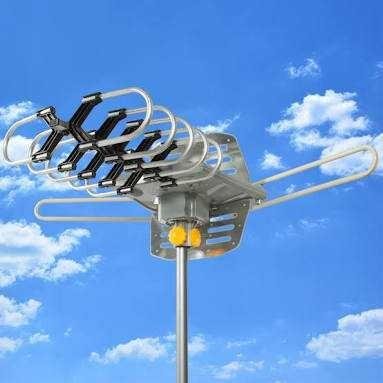
Antennas or Arial or aerial radio, television and radar system parts, which are used in a specific incoming or outgoing electromagnetic radio waves leads. Antennas are mainly made of metals and they can be different shapes. Antennas used for the transmission of radio and television shows are seen as mast. On the other hand, large-scale parabolic reflector antennas are used to take radio waves from the cosmic objects located in outer space.
German physicist Heinrich Hertz created the first antennae. British mathematician and physicist James Clark Maxwell presented a theory that according to visible lightA type of electromagnetic wave that flows through air or air. In the late 1880s, Herz completed a historical examination to verify this theory. Herz created a broadcast or transmitter device for that national wave. The machine had two flat, square metal plates, which were attached to each bar. The bars are again connected to some metal spheres located in short distances. Due to an induction coil connected to the spheres, a electrosegul could cross the gap between the two spheres and cause variable electricity in the bars. Crossing sparks through the spaceship of a wire, it was understood that no wave had arrived at a remote point.
Italian physicist Giuliammo Marconi was the original inventor of the wireless telegraph. He created various types of antenna for transmitting and receiving telegraph messages. He discovered the importance of high-antenna waves for low frequency streaming. The antennas that Marconi and others built at the beginning, were dependent on the size and shape of the effective frequency antenna. Later an antennae could control the antenna frequency. The oscillator produced the wireless signal.
In the 1920's, many more elements were built in a systematic row (Array) and more powerful antennas were made. Metallic trumpet antenna was created after the development of the waves in the next decade; These could control the transmission of high frequency radio signals. In the following years, various types of antennas were invented for more variety of purposes. Antenna can only be made to transmit or receive waves. Broadcast antennae usually has more electrical power than customer antenna. A broadcast antenna is only possible to design for certain frequencies. For example, the United States, MA(Amplitude Modulation) In the case of radio transmission, frequencies are used from 535 to 1605 kHhhhhhhhhh. Wavelengths can be up to hundreds of meters in these frequencies, so the antenna size is not so important. The FM (frequency modulation) broadcast in the 88 to 108 MHz frequency is used, the wave length of about 3 meters. In this case, antenna has to adapt very accurately for transmission and acceptance.
Antennas can be made up of only one or two bars, which can be arranged in different shapes (bipolar, leak-shaped, curved, or spiral). Antenna may be made by aligning many elements in a row (on a line or at a plane or rotating electronically). Again, the power of radio waves is collected and concentrated using reflector and transversal (lens) antenna parallel plate (reflector telescopes are used in the same way in the reflecting telescope). Directional antennas are designed in such a way that they can be directly oriented towards the source of the signal and can be traced through them.